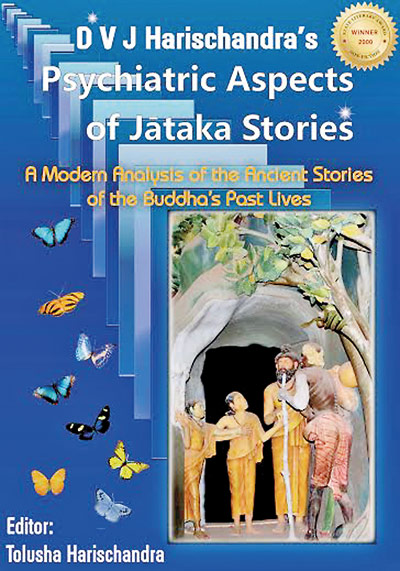Unravelling deep insights in familiar Jataka tales
View(s):In literary, as well as in common usage in Sinhala, the word vahanse added as a suffix to a noun denotes reverence, respect, or sanctity, eg. Bodhinvahanse, Swameenvahanse. Sometimes it is used even when reference is made to the mother or father maniyanvahanse/ piyananvahanse.
However, when it comes to books, this suffix has been used only in two instances.Piruvanapothvahanse and Jataka pothvahanse.
The former being in Pali, Jataka pothvahanse is the only Sinhala literary work to which this reverential term has been made. This fact alone signifies the high esteem in which the Sinhalese for centuries, held the Jataka pothvahanse.
It was the source of inspiration as well as the source of material for the writer, particularly the poet, the artist, the dramatist and the Maha Sangha and the general public. They naturally looked at the Jataka potha from a spiritual perspective.
It was Martin Wickremasinghe who first saw the literary and psychological aspects of the Jataka stories. As to be expected he dwelt more on the literary aspect.
‘I have made an attempt to introduce the reader to the literary aspect of a few selected Jataka stories’ said Wickremasinghe in ‘Buddhist Jataka Stories and Russian Novel’.
In that he had tried to find common ground between the Jataka stories and the Russian novels. But in doing so, he also found ‘certain Jataka stories in which attempts, of course unintentional, have been made to reveal the working of the subconscious mind” (page 5).
But it was left to psychiatrist Dr. D.V.J. Harischandra, also an eminent Buddhist scholar to delve deeply into the psychological aspects of Jataka stories.
In 1990 he had read a paper on “Psychiatric Aspects of Jataka Stories” at the Sri Lanka Psychiatric Association which he had expanded to his present work with the same title.
Dr.Harischandra, quoting Curran and Guttmann, the authors of “Psychological Medicine” defines psychiatry as that branch of medicine, whose special province is the study, prevention, and treatment of all types and degrees of mental ill-health, however caused.
He further says that these objectives enunciated in this modern definition of psychiatry were known to our ancestors.
Modern psychiatric treatment has two major areas: physical and psychological. The latter does not require the use of anything physical and is based on psychological theories.
The term psychotherapy is applicable to any such treatment for which the therapist employs a combination of listening and talking, restoring morale, and making problems more soluble.
The Jataka stories have provided the author with enough examples in both these areas as well as in their sub areas. In “Darimuka Jatakaya” it is mentioned that there are eight categories of ‘unmade’ meaning psychiatric disorders.
Kunala Jatakaya he cites as a case where a bodily defect could be a strong sexual stimulus. In this story, a queen who has a handsome husband, offers herself to an ugly cripple with all four limbs deformed.
In another story Maha Paduma Jataka a bedroom scene outlines a serious attempt at incest by a stepmother. While Jataka stories are a storehouse of psychological material the Tripitaka itself provides enough evidence on the importance Buddha attached to the psyche.
The first verse in Dhammapada says, “Mind precedes things, dominates them, and creates them.” In citta wagga in Dhammapada mind is referred to as flickering, fickle, difficult to guard and difficult to control.”
As for psychotherapy the Buddha had provided the seed which thousands of years later developed into the modern psychotherapy.
Jenny Quek in her much researched book “Buddha’s Techniques and Practice of Counseling as Depicted in the Pali Canon” states: “All the techniques which the Buddha had so skilfully applied 2,550 ago are being used by psychotherapists and counsellors on one occasion or other today.”
“The counselling techniques used by Sigmund Freud, Carl Jung, Albert Ellis, Fritz Perls, William Glasser, Virginia Satir, Eric Berne, Steve de Shazer and Insoo Kim Berg and many other psychologists and psychotherapists are similar to those applied by the Buddha” (pg 10).
In this treatise ‘Psychiatric Aspects of Jataka Stories,’ Dr. Harischandra has ventured into an area which had not been traversed by any scholar earlier and unravelled much information and data in relation to Jataka stories and analyzed them, thus contributing immensely to the study of psychiatry.
| Book facts Psychiatric Aspects of Jataka Stories by Dr. D.V.J. Harischandra. Reviewed by Dr. P.G. Punchihewa |


